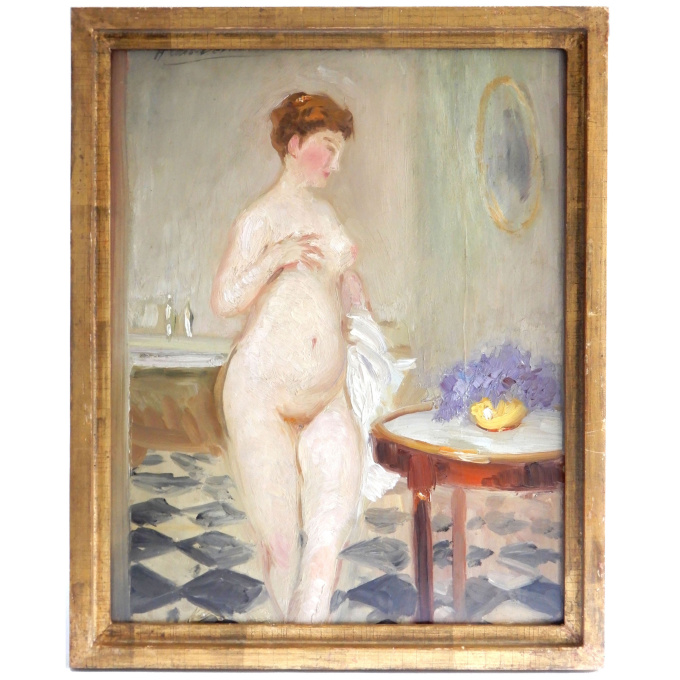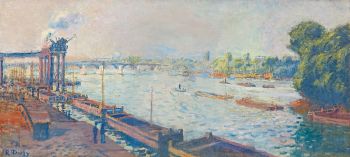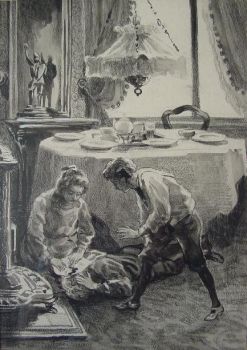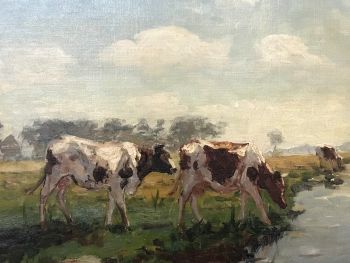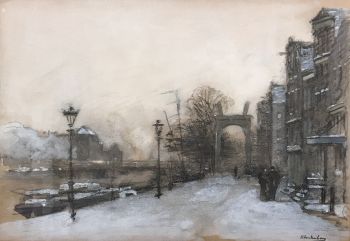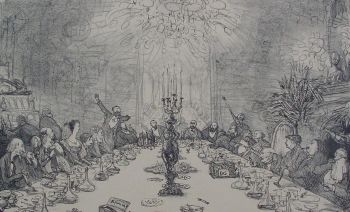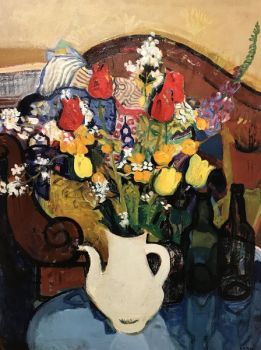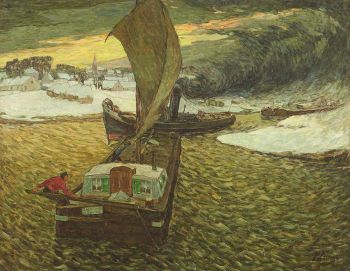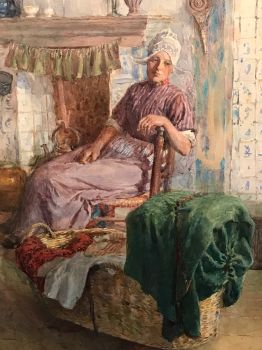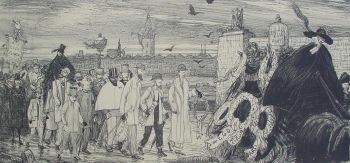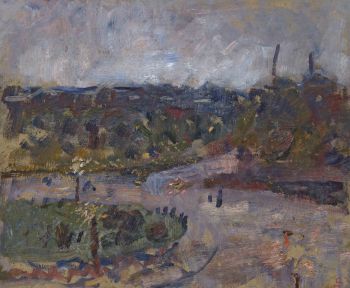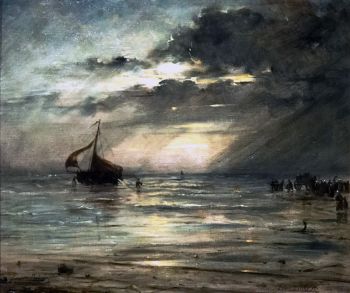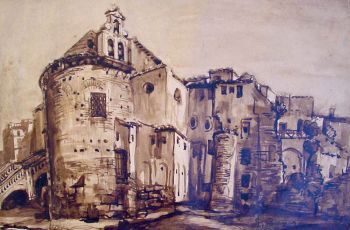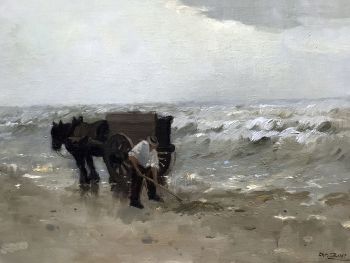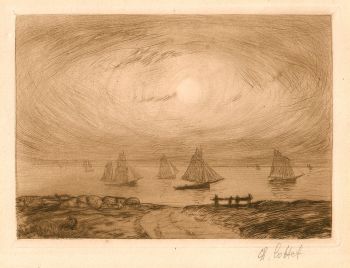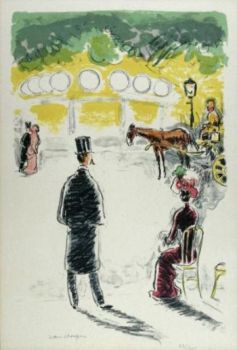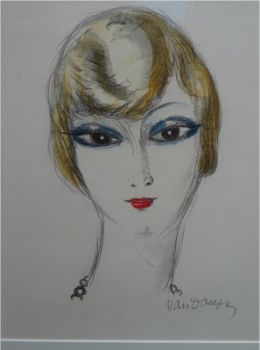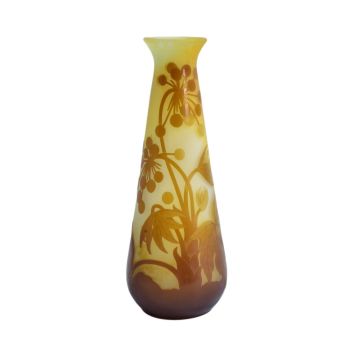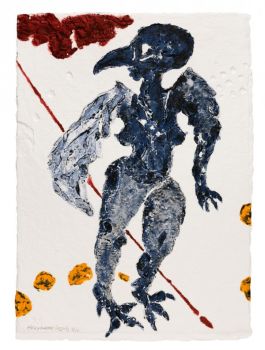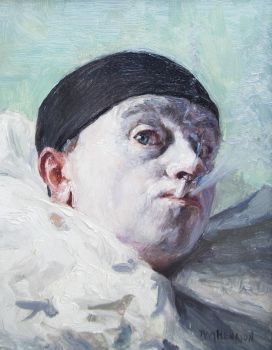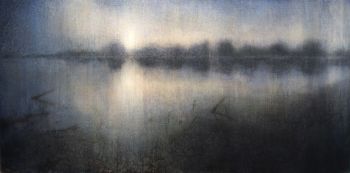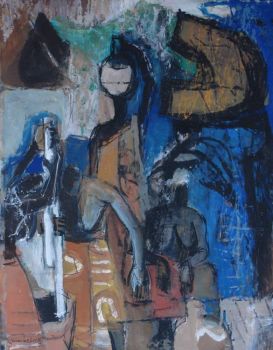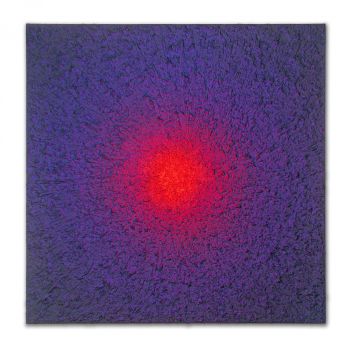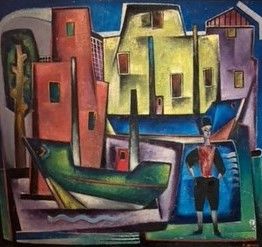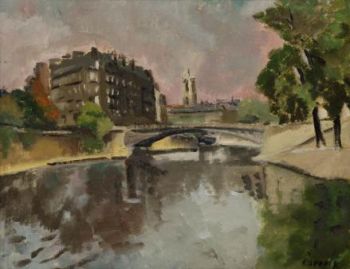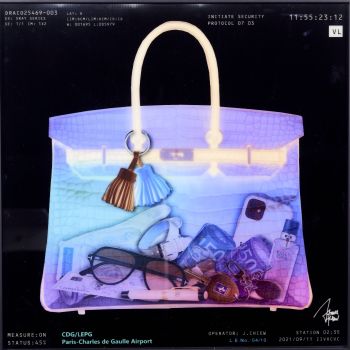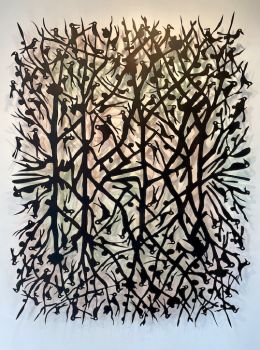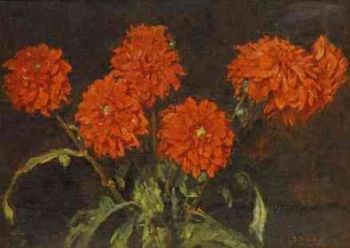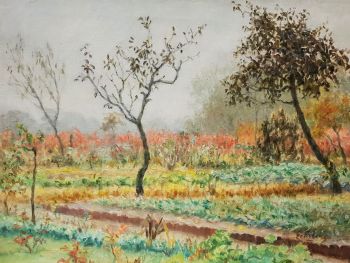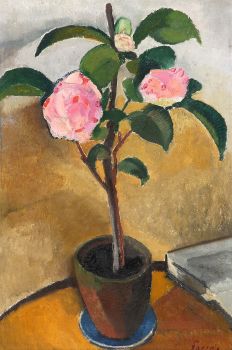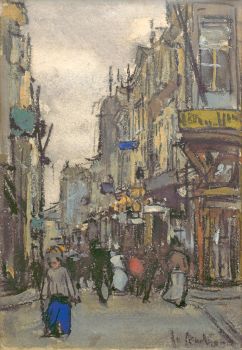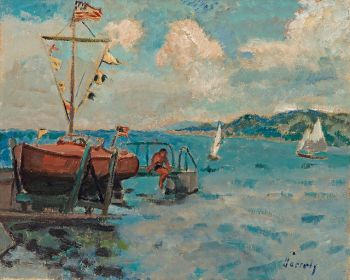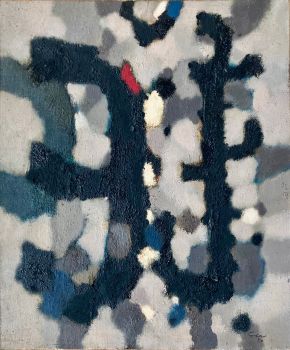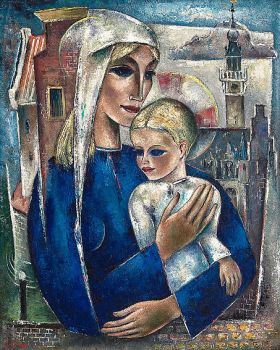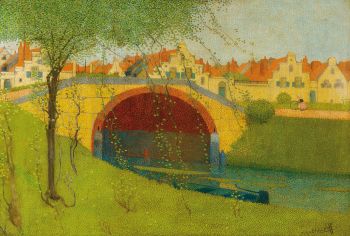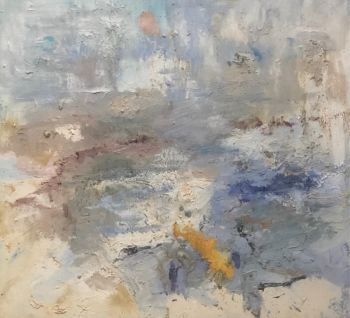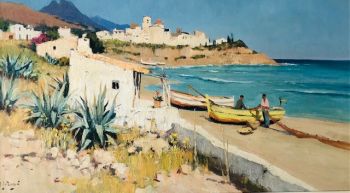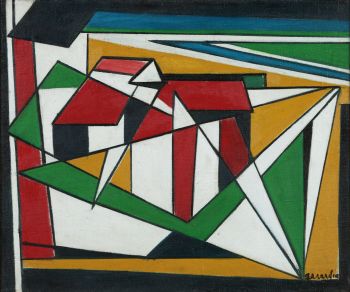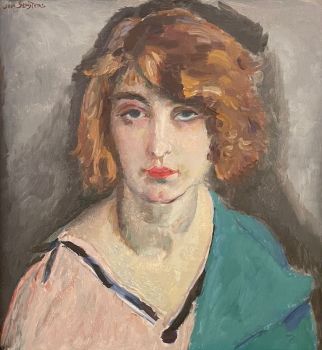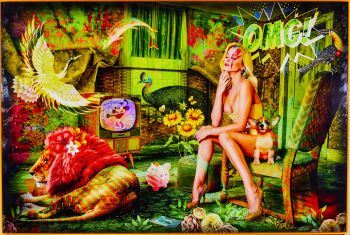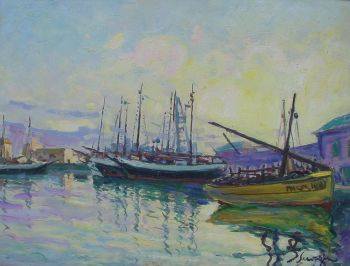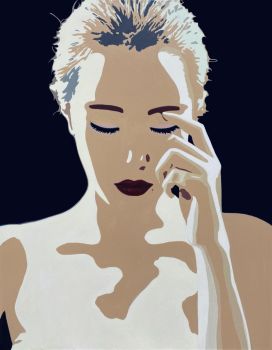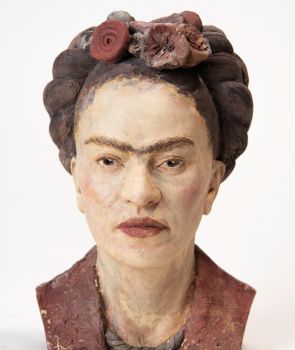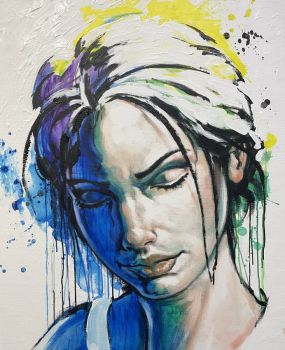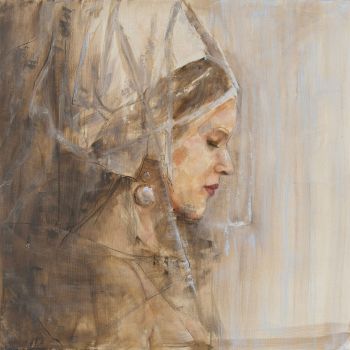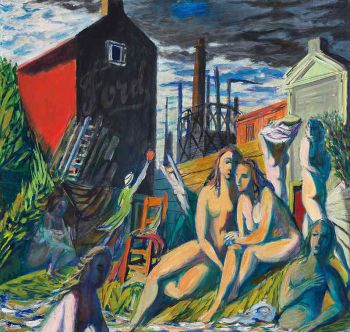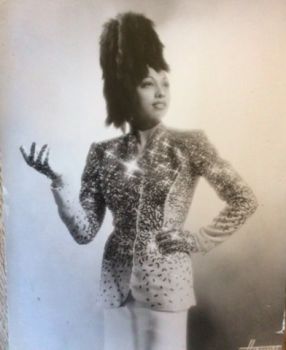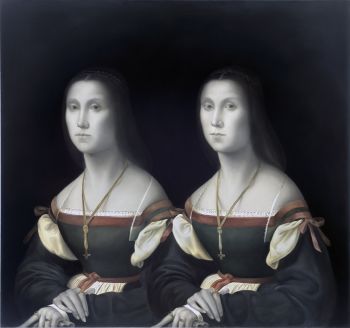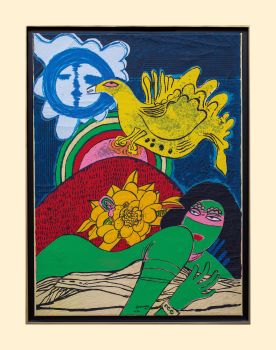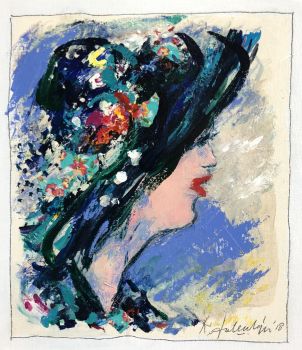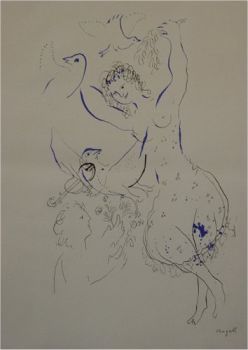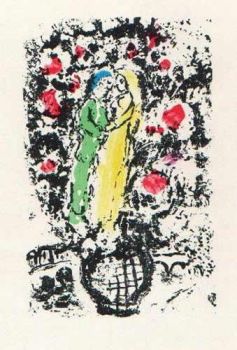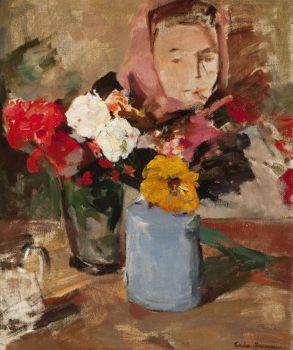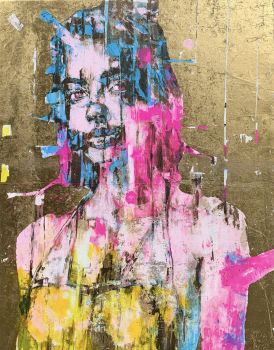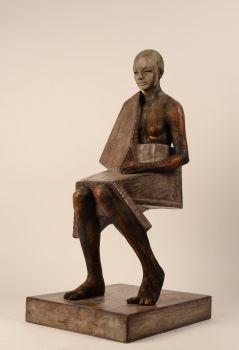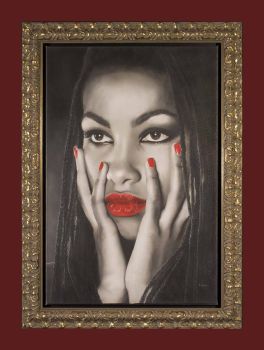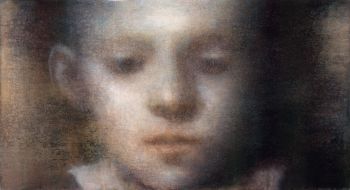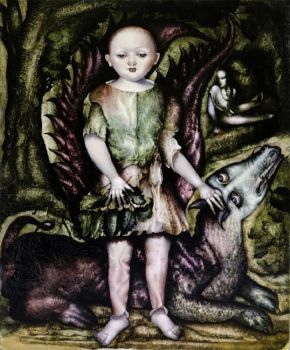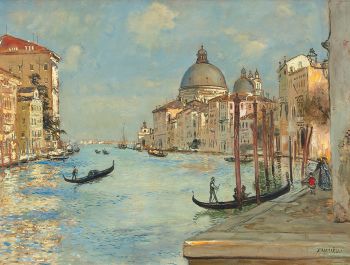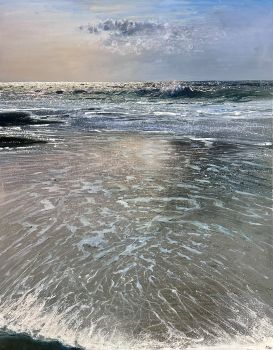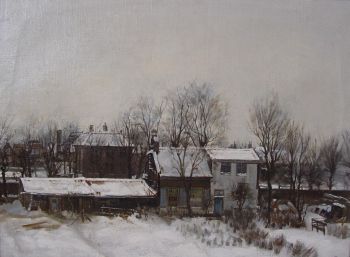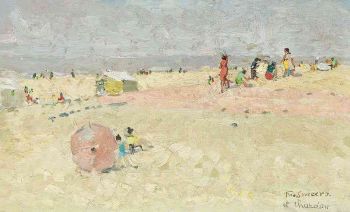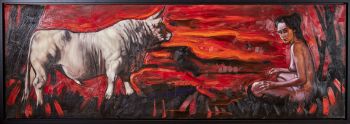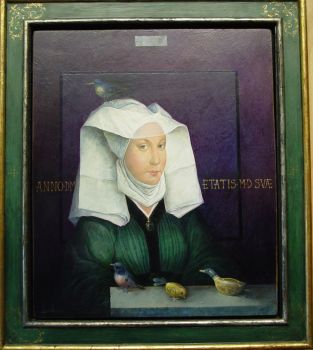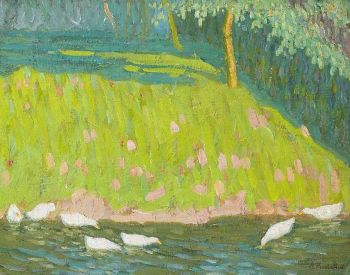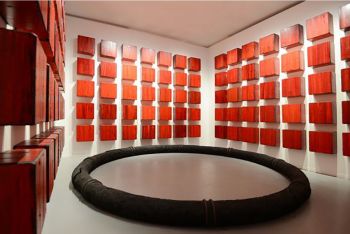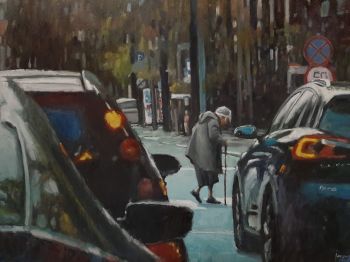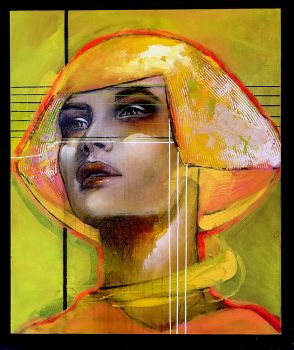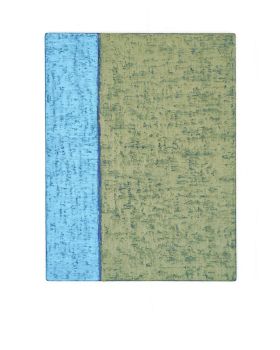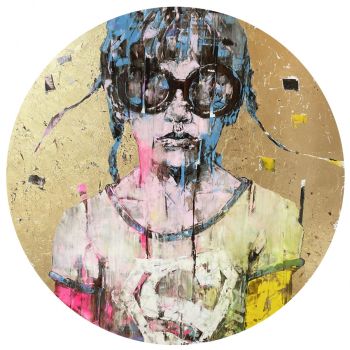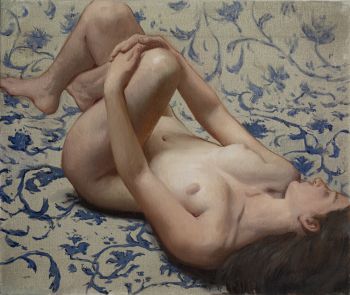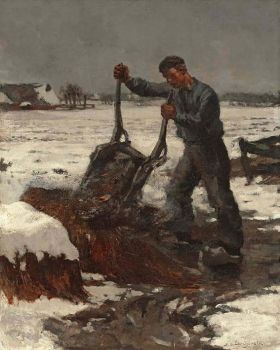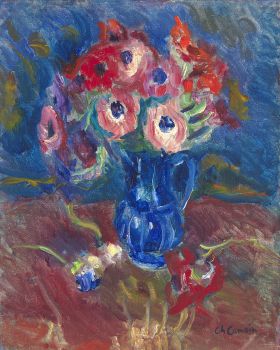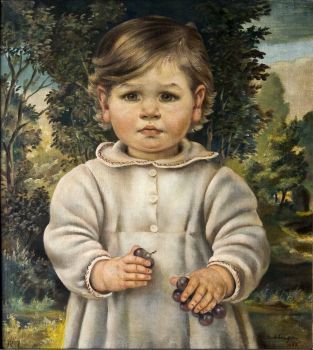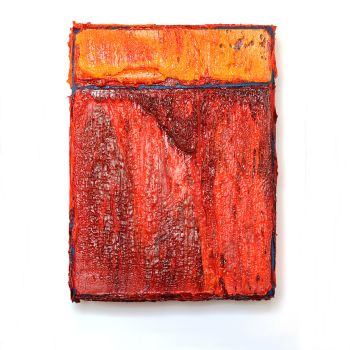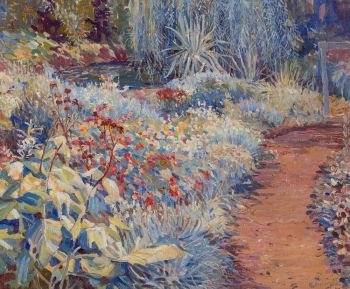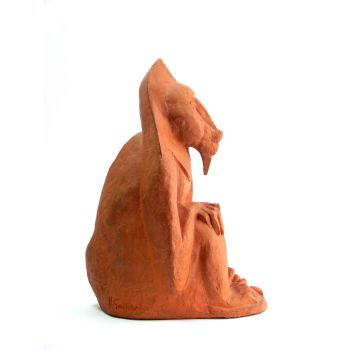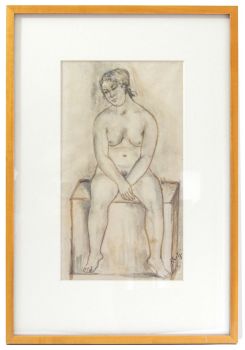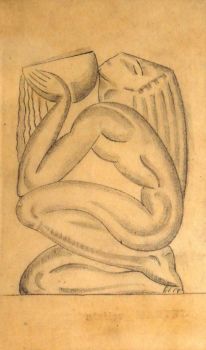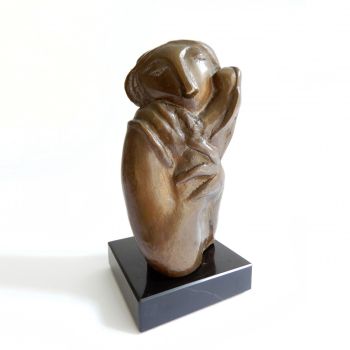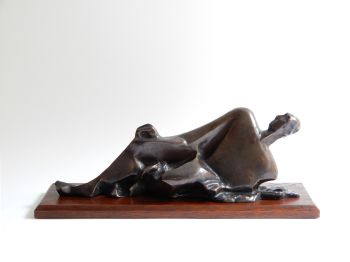'Nu a la toilette' 1900 - 1910
Henry Caro-Delvaille
ÖlfarbeFarbe
44 ⨯ 36 cm
ConditionNear mint
Derzeit nicht über Gallerease verfügbar
Dille Art
- Über KunstwerkIntimate and lovely oil painting on panel (wood), depicting a woman who has just taken a bath. It is a domestic scene that Henry Caro-Delvaille wanted to capture. The style of painting is different, but the atmosphere is reminiscent of the work of Pierre Bonnard (1867-1947). They also exhibited together with the Group "Les Intimistes" in 1906.
This work was painted in the early 1900s and was part of the famous Sommaruga Collection in Milan.
It is signed top left with 'H. Carol Delvaille.
Biography:
Henry Caro-Delvaille (Bayonne, 1876 - Paris, 1926) was a painter of elegant interiors, figures and nudes, he was especially known as a painter of women, always elegant and often intimate.
He was also an engraver and decorator. After studying at the École des Beaux Arts in Bayonne, he continued his education at the École des Beaux-Arts in Paris, Léon Bonnet became his mentor.
He won his first medal at the Salon des Artistes Française in 1901, where he made his debut in 1899. From 1903 he was a member of La Société Nationale des Beaux-Arts.
In 1905 he won the grande Medaille d'Or at the Exposition Internationale in Munich. This brought him a lot of success, he received many assignments. As early as 1905, the French state purchased work from Henry Caro-Delville.
In 1906, Caro-Delvaille was one of the participants in the second exhibition of the "Groupe Intimistes" at the famous galerie Henry Graves in Paris.
Pierre Bonnard, Edouard Vuillard, René-Xavier Prinet and Etienne Moreau-Nélaton also participated in this exhibition. (Les Intimistes, Galerie Henry Graves, from February 14 to March 3, 1906.)
Both the public and art critics were very positive about Caro-Delvaille, the art critic Jean Valmy-Baysse wrote that he gave social events the charm of poetry. According to art critic Charles Morice, his work was "a representation of modern mondanité" (worldliness).
Maurice Denis sees in him an artist whom he compared to James Abbott McNeill Whistler (USA 1834-1903).
At the time, he presented him as one of the young promises of French painting
Henry Caro-Delvaille was represented by the important galleries such as Georges Bernheim Jeune in Paris and Nathan Wildenstein and René Gimpel in New York.
From 1917 to 1925 he also spent several years in the United States.
Henry Caro-Delvaille died in 1926 and is buried in Bayonne Jewish Cemetery.
His paintings are part of private and public collections in various museums in France, such as, for example, the National Museum of Modern Art, Center Pompidou, Musée des Beaux-Arts de la ville de Paris. But Princeton University Museum, USA or National Museum of Fine Arts, Beunos Aires in Argentina also have works by him in their collection.
Literature:
- Christine Gouzi, Henry Caro-Delvaille: peintre de la Belle Époque, de Paris à New York. Dijon, éditions Faton, 2016.
- Pierre de Lanux, « On the Revival of Applied Art. A conversation with Henry Caro-Delvaille », Arts & Decoration, avril 1922, vol. 17, p. 419.
- Henry Caro-Delvaille, "The Renaissance of Mural Decoration ", The Lotus Magazine, March 1913, vol. 4,
n°6, p. 253.
- Benezit Dictionnaire des Artistes, Gründ, Volume 3, p. 424.
Condition:
Good, There is an old restoration on the back of the panel. A professional restorer cleans the painting and gave it a new varnish. - Über Künstler
Henry Caro-Delvaille, ein Franzose spanischer Herkunft, war ein bedeutender Maler des gesellschaftlichen Lebens im frühen 20. Jahrhundert. Sein richtiger Name war Delvaille ("de la Vallée" auf Spanisch), aber er unterschrieb Caro-Delvaille, weil seine Mutter, mit der er eine enge Beziehung hatte, Caroline hieß. Seit seiner Kindheit war Henry Caro-Delvaille neugierig auf Kunst, beobachtete seine Umgebung und zeichnete. Seine Mutter, eine Schriftstellerin und Dichterin, war seine erste Führerin.
Nach seinem Studium von 1895 bis 1897 an der Bayonne School of Fine Arts war Henry Caro-Delvaille Schüler von Léon Bonnat an der Pariser School of Fine Arts. 1899 stellte er erstmals im Salon de la Société des artistes français in Paris aus. 1903 wurde er Mitglied der Société nationale des beaux-arts und 1904 deren Sekretär. 1905 gewann er die große Goldmedaille bei der Internationalen Ausstellung in München. Im selben Jahr beauftragte ihn sein Freund Edmond Rostand mit der Dekoration seiner Villa in Cambo. Danach wurde er als Porträtmaler bekannt und erhielt zahlreiche Aufträge. Er wurde 1910 zum Ritter der Ehrenlegion ernannt. Seine Malerei kann mit der von Carolus Duran (1837-1917), einem berühmten Maler der Belle Epoque, verglichen werden.
Henri Caro-Delvaille wanderte 1913 in die Vereinigten Staaten aus und ließ sich in New York nieder, um sich einem Art-déco-Stil zuzuwenden. Er war eine zentrale Figur in künstlerischen, literarischen und musikalischen Kreisen auf beiden Seiten des Atlantiks, von Paris bis New York. Viele seiner Arbeiten sind heute jenseits des Atlantiks zu finden.
Sind Sie daran interessiert, dieses Kunstwerk zu kaufen?
Artwork details
Related artworks
Jan Sluijters
Original illustration of Sluijters for the book: 'Laura's opstel'1881 - 1957
Preis auf AnfrageKunsthandel Pygmalion
Johannes Christiaan Karel Klinkenberg
Cityscape Amsterdam1875 - 1925
Preis auf AnfrageGalerie Gabriëls
Emile Bernard
Sketch of the surroundings of Tonnerre1888 - 1941
Preis auf AnfrageKunsthandel Pygmalion
 Kuratiert von
Kuratiert vonDanny Bree
1 - 4 / 24 Kuratiert von
Kuratiert vonGallerease Magazine
1 - 4 / 24Unbekannter Künstler
Set of eight gouache drawings1799 - 1801
Preis auf AnfrageRobert Schreuder Antiquair
Mary Alacoque Waters
'Unknown Twins' after Rafael1999 - 2004
Preis auf AnfrageGalerie Mia Joosten Amsterdam
1 - 4 / 24- 1 - 4 / 24
- 1 - 4 / 12

